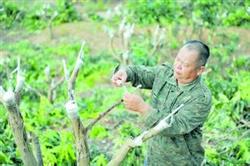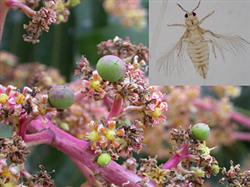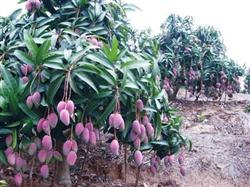High grafting and replacement method of mango

First, before preparing to change the species, it is necessary to strengthen the fertilizer and water management of the changed trees. Prune the aboveground parts properly and remove diseased, withered, shady and overdense branches. Cut off the cross branches; for perennial trees, cut off the main and side branches (spring and autumn grafting, autumn saw grafting in the next spring) and leave some branchlets at 1.2-1.5 meters above the ground in spring and autumn. After drawing new shoots, only 2-3 new shoots are evenly distributed in each saw. When the new shoots are ripe and their diameter is more than 0.5-0.8 cm, they can be grafted on the new shoots. 15 days before grafting, fertilization should be stopped, which can slow down the flow of sap, which is beneficial to grafting. Second, during the grafting period, when the sap is about to flow, that is, before the new shoots are pulled out, rootstocks and scions are easy to peel. High temperature, low temperature or rainy days, the survival rate is low, while spring (March-April) and autumn (mid-August to mid-September), the survival rate can reach more than 90%. Although high grafting can survive in May, it is easy to encounter high temperature when it sprouts after survival, and it is easy to return to dry phenomenon; in October, high grafting can also survive, but at this time it is experiencing drought and temperature decreasing gradually, and it grows slowly after surviving sprouting, and even new shoots may appear frostbite or frostbite to death. Third, the high grafting method selects the stout, disease-free and pest-free old mature branches or cork branches as scions from the mother branches with good fruit. Methods there are bud slice affixing, single bud ventral grafting and single bud splicing. For trees without short truncated branches, bud splicing or single bud ventral grafting is used for the high grafting of the original branches 1 to 1.5 meters above the ground, and the cutting method or bud splicing method can also be used for new branches that have been truncated. When grafting, it is best to use extra-thin film for bandaging. The single-layer film wraps the scion bud eye, and the sprouting bud can grow through the film after survival, thus reducing the film picking process. Fourth, after timely unbinding and grafting, the film should not be released prematurely, otherwise the new shoots will wither. Generally speaking, it is safest to unbind the new shoots when they turn green for the first time; unbinding too late will affect the thickening and growth of rootstocks and scions and cause rot. In the case of ventral grafting of buds and splicing of buds, the 8-10 cm branch tips on the interface should be cut off 30-40 days after grafting, and then unbound after the new buds become old mature shoots, and cut the anvil for the second time, that is, it is appropriate to cut to the top of the graft.
- Prev

Control techniques of diseases and insect pests at flowering and panicle stage of mango
After the mango ear was damaged by diseases and insect pests, the flower ear was deformed, the flower quality decreased, the flower bud fell off, the flower withered, and could not blossom and bear fruit. The prevention and control methods of diseases and insect pests that harm the flower ear of mango are as follows: first, anthrax is the most serious disease that harms the flower ear, which occurs as soon as the flower ear is pulled out.
- Next

Several points for attention in fertilization for High yield of Mango
In order to cultivate mango with high yield, the varieties should be selected first. After the seedlings are grafted and survived, the management should be carried out in time, such as expanding holes, preventing diseases and insect pests and so on. Scientific and rational fertilization is an important link related to high yield and good fruit quality throughout the whole tree age cycle. Note: 1, young mango tree root system is small, fibrous root.
Related
- Moge, come on! The staff of the peasant association in the producing area of cantaloupe were frightened when the crowd gathered.
- Causes and Solutions of low Fruit setting rate of Apple
- Symptoms and control measures of passion fruit virus disease
- Fruit growing lesson: how do apple orchards keep high yields?
- Can you build orchards in the mountains? What are the pros and cons?
- How to manage the coloring period of Crisson grape?
- This paper introduces the processing technology of two kinds of fig products.
- How much is a month for retired teachers in rural areas by 2020?
- How can strawberry planting increase sugar content? We should pay attention to management in many aspects.
- What are the cultivation techniques on how to improve the yield of golden fruit?

